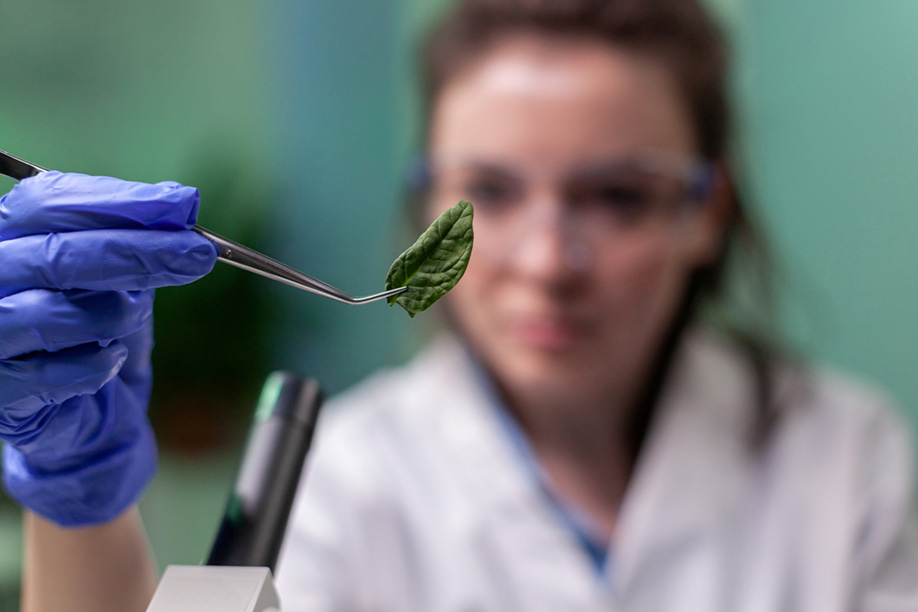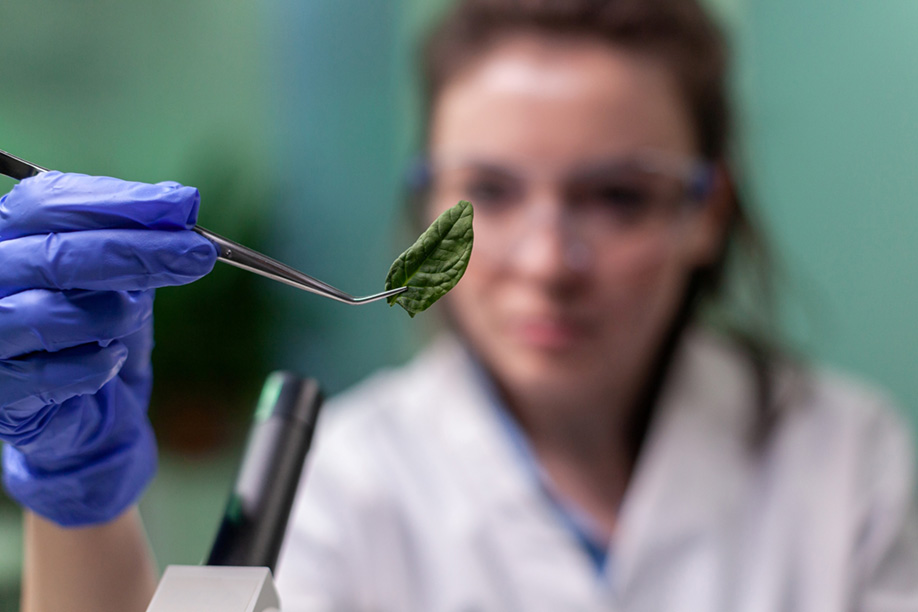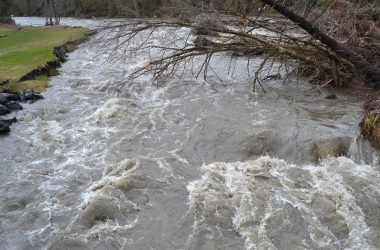
A scientist studies a green leaf from a crime scene before placing it under a microscope for further examination.
by Jodi Larison, Extension Master Gardener, University of Vermont
Plant materials have been used to solve crimes on television shows, in books and in real life. The use of plant materials in solving crimes is called forensic botany. Plant materials that have been utilized in solving crimes have included flowers, fruits, leaves, pollen, seeds and wood.
In his book, “Fruits of the Poisonous Tree: A Joe Gunther Mystery,” Vermont author Archer Mayor’s character Detective J.P. Tyler, when commenting on evidence from a crime scene, held up a small baggie with a tiny fragment of organic matter in it. As to this organic matter, he stated “It’s Russian olive…not a rare plant…The point is, there ain’t a single Russian olive on Gail’s property.”
Gail was the victim. Tyler also noted that he found “a Russian olive right in front of” a suspect’s trailer.
While that’s an example of plant CSI in fiction, one of the first and most famous cases solved using forensic botany was the 1932 kidnapping and murder of the Lindbergh baby. A homemade ladder used in the kidnapping was left behind at the scene.
The rings of a piece of wood in the ladder matched perfectly with the rings of a floorboard in the attic of Bruno Richard Hauptmann, according to Dr. Arthur Koehler, chief wood technologist at the Forest Products Laboratory in Madison, Wisc. The match was an exact match of the annual rings as well as their unique pattern.
The defense team tried to disallow the forensic botany evidence, but the judge decreed that Koehler was an expert and allowed his testimony. Hauptmann was convicted with the testimony presented by the wood technologist key to his conviction.

Forensic botany, the science of using leaves, seeds, pollen and other plant materials to help solve crimes has helped lead to convictions in recent years.
The first-time plant DNA was used to get a conviction was in a 1992 murder of a woman in Arizona. In this case, an investigator noticed that a Palo Verde tree near the victim’s body had recently been scraped, possibly by a vehicle. DNA in the seeds from the tree matched the DNA of seeds found in seed pods in the suspect’s truck.
In both these cases, the plant material created botanical fingerprints that led to convictions.
Pollen also can act as a botanical fingerprint. For example, pollen might help identify a region where an event occurred or where a suspect has been. In some cases, DNA analysis actually can link a leaf to a single tree.
While the pollen of some plants is unique, this is not true for all plants. For example, grass pollen generally cannot be linked to specific plants or areas, but seeds and fragments of grass may have unique DNA. While not technically a plant, algae also has aided in solving crimes.
Additionally, plant materials may provide clues as to the timing of an incident. In the 2011 trial of Casey Anthony, plant materials were used by the defense to refute the prosecution’s timeline. In this case, a forensic botanist determined the duration of time that her daughter Caylee’s body was in the woods, all based on the growth of the plants in and around her remains.
Forensic botanist Dr. Christopher Hardy, a professor at Millersburg University, has been cited as stating that forensic botany is an ideal investigative tool because it is always unbiased. So, the science of botany maybe more important than one might think when it comes to solving crimes.






